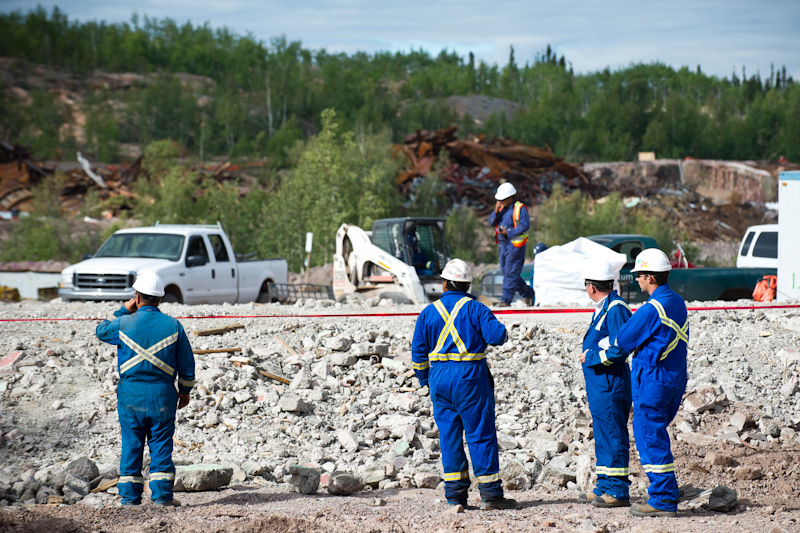Across Canada, there are laws in place to protect employees on the job. This occupational health and safety legislation gives three important rights to all employees to ensure they have the knowledge they need to be safe on the job, the freedom to participate in health and safety activities in their workplace and the ability to refuse to perform an unsafe task.

The Right to Know
You have the right to know what hazards are present in the workplace, and be given the information, training and supervision you need to protect yourself. Because of the broad range of job tasks at SRC – from office to lab to field – the hazards our employees face can be quite diverse and can include physical, chemical, biological, ergonomic or psychological hazards.
Some examples of workplace hazards
- Physical hazards can be the most common in any workplace and can include any unsafe conditions that can cause injury, illness and death. Some of the most common physical hazards that an employee can be exposed to are:
- Electrical and machinery hazards
- Loud noises
- Working from heights
- Exposure to environmental elements
- Spills
- Ergonomic hazards can occur when the type of work, body position, worksite layout and working conditions put strain on your body. These hazards are the hardest to identify and don’t always present themselves to an employee immediately. Short-term exposure may result in sore muscles, but long-term exposure may result in long-term injuries. In terms of workplace hazards for office employees, ergonomic hazards are the most common. Some of the ergonomic hazards that employees can be exposed to are:
- Poor lighting
- Improper workstations
- Frequent lifting
- Repetitive strain
- Biological hazards can occur from working with animals, infectious plant materials or infectious test samples. These hazards are more easily identified and are more common to laboratory work. Even when the employees are in the field collecting samples, they need to be aware of these types of hazards as they can include:
- Fungi
- Bacteria and viruses
- Plants
- Insect bites
- Animal and bird droppings
- Blood or other body fluids
- Chemical hazards are when an employee is exposed to any chemicals in the workplace in any form, solid, liquid or gas. Some chemicals are safer than others, but every employee should be aware of the risks of each in their work environment. Hazards can range from:
- Liquids - cleaning products, paints, acids and solvents
- Vapors and fumes –from welding to exposure to solvents
- Gases
- Solid chemicals
At SRC, our employees may be exposed to one or more of these common hazards every day, which is why it’s even more important for all our employees to be aware of their working environment. That's why it's important to give employees the tools they need to protect themselves and others around them, so we can all go home safely.
The Right to Participate
You have the right to participate in keeping your workplace healthy and safe. One way to actively participate is being a health and safety representative or committee member. You also have a right to report unsafe conditions and practices, and to participate in training, information sessions and inspections to help you do your job safely.
SRC’s Occupational Health and Safety Committee is made up of management and employees from every division who meet to identify, recommend and promote health and safety issues. One of the committee’s important duties is regular workplace safety inspections to identify health and safety issues and to discuss health and safety concerns with employees. The committee will also discuss any health and safety near misses and incidents, and present suggestions for making our workplace safe.
The Right to Refuse Unsafe Work
You can refuse work that you believe to be dangerous to yourself or your co-workers. When you exercise your right to refuse work, you must follow the proper procedure. SRC has a standard protocol that has been written so that we can address any concerns when an employee feels that a task is a danger to the health and safety of an employee. Such a situation is reported to the supervisor to resolve the concern. If a resolution can’t be reached, SRC’s OH&S committee may get involved to investigate and make recommendations.
For safety goals to be a priority in any workplace, companies must have a good safety culture in place. SRC’s safety culture has been embraced by the whole company, which in turn creates a safe workplace. Working in such a safe environment helps the company and employees be successful in achieving their goals. Remember - think safe, be safe and we’ll all go home safe.
